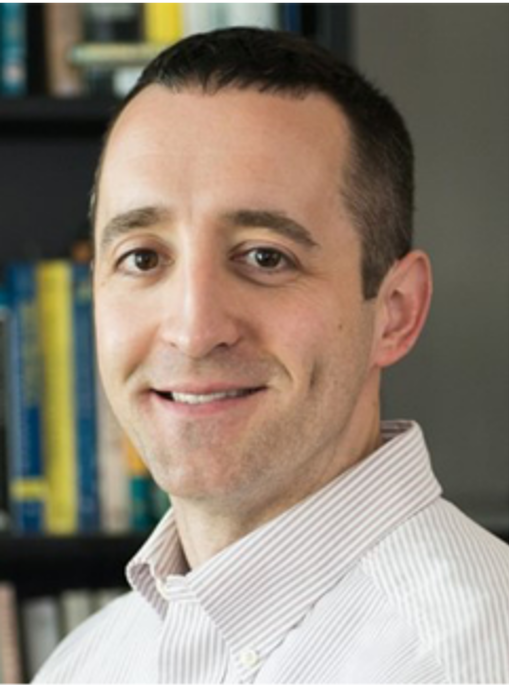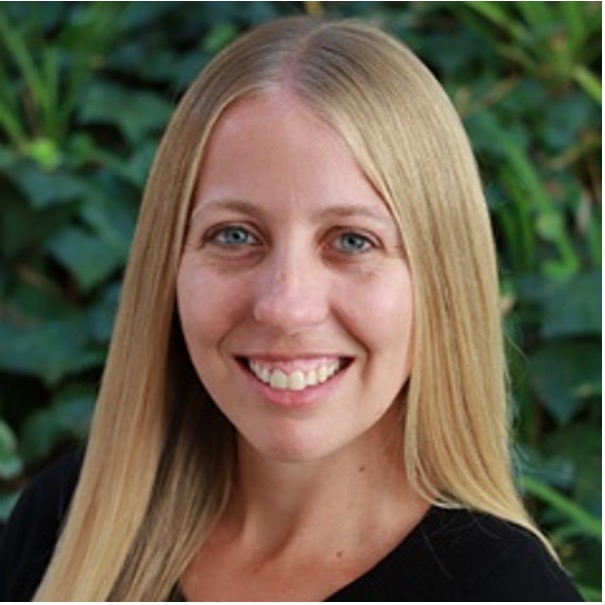
Blog post by Lacie Barber | Blog edited by Christopher Cunningham
April 2025
The Society for Occupational Health Psychology Lessons Learned blog series aims to provide “real talk” insights related to navigating scientist-practitioner issues in occupational health psychology (OHP). For this entry, we interviewed Dr. Chris Cunningham, who is a Guerry Professor and UC Foundation Professor of Psychology at The University of Tennessee at Chattanooga (UTC). The responses to interview questions are lightly edited for clarity.
How Does Your Position Relate to OHP?
I’m a faculty member for our master’s of science degree program in industrial-organizational (I-O) psychology, working almost exclusively at the graduate level to support scientist-practitioner training. I engage in a variety of consulting work, too, and my biggest current client is my university, where I am facilitating a campus-wide culture change to promote and protect employee health, safety, and well-being. This project is working well on our campus and being seriously considered for extension to other campuses within our university system. This is contracted as a part-time administrative job, with me serving as facilitator of our Total Organizational Health (TOH@UTC) initiative. In addition to funding my work as a consultant/facilitator for this project, I’ve been able to secure funding to support multiple graduate assistants. As part of this work, we now facilitate and manage all major campus surveys, helping to ensure that data are analyzed, interpreted, and fed back to campus leaders and employees in a timely and useful fashion. This is then partnered with internal consulting within specific work units and divisions/colleges of the campus, as well as collaborative troubleshooting and problem solving with executive leaders on campus to respond to specific health, safety, and well-being needs that arise.
I’ve been at UTC for 18 years and have always made OHP a core focus in my teaching, research, and our broader Master’s program curriculum. OHP themes show up in almost every class we teach. This is especially true for my courses and those taught by my colleague, Dr. Kristen Black (with whom I co-authored the Essentials of Occupational Health Psychology text in 2021). For example, we have a dedicated seminar on occupational and organizational health, but we always touch on health and safety when addressing other organizational topics in other courses. Faculty and students in our program also collaborate to address various consulting projects with local businesses, and these projects often connect to worker health, safety, and/or well-being themes. In addition to the work I do here with UTC, I also try to provide mentoring and support to students and professionals associated with other institutions. I am also a past-president of SOHP and one of the original advisory board members for the Society for Total Worker Health.
Moving past biographical details, I honestly don’t know how NOT to be a scientist-practitioner. I don’t consider action without data, and I don’t consider data without action. Most people may not know that you can do a lot of consulting even with a faculty role. My university handbook specifies that faculty are allowed one day of consulting type work per week…but what constitutes a “day” is not specified. So, I allocate up to 24 hours per week to consulting type work and I have the green light to do this from my department head as long as my other core duties are completed. I have to note here, though, that if you are just starting out with a new job, make sure you do the job you were hired for first. Then, once you have proven to others and yourself that you can do that job well, you can do whatever else you want that also creates value. This is what job crafting looks like to me (in a very oversimplified way).
How Has Your Perspective on OHP Issues Shifted Over Time?
A first example pertains to the topic of work-family (or more broadly, interrole) conflict. This was my initial main area of interest when I started my doctoral studies at Bowling Green State University. In my first semester, my advisor Steve Jex, appointed me as the “work-family czar” for the program, and asked me to learn all there was to know about this field and then help others in the program to not miss any details. Over time, I became increasingly frustrated with research in this area because it was so focused on all of the bad or negative elements of such conflict, even though such conflict can be a good thing. The thing is, if we ever get to a point where we no longer experience work-family or interrole conflict, then something is probably wrong or imbalanced in our lives. If we don’t experience such conflict, then we have either become unidimensional/single domain people or we have created such strict boundaries between our life roles that we are living some sort of split persona in our day-to-day lives. In this area of OHP, I wish we would learn to recognize work-family dynamics and all their complexity, and then learn to make decisions and choices that help us and our families and communities best optimize the complex interrole relationships we all manage. Interrole conflict can be a stressor, but experiencing and managing such conflict also creates and sustains a sense of purpose, meaning, mattering – all of which are important for our motivation to do things that matter. Conflict related to things we care about is something that we need to learn to be ok with…and maybe even facilitate. Societally we are starting to see that people don’t want to commit or engage fully with work to avoid conflict. I worry that OHP research has in part led us down the wrong path in that research area.
A second example is that we often hear in our field that the key to protecting and promoting safety and well-being is to develop more policy. I used to believe this too, given that this approach is common and sometimes very effective in other parts of the world. Unfortunately, the likelihood of policy-driven efforts leading to real change in our country is not strong. We need to put more effort into helping company leaders, investors, and other key stakeholders understand that there is a real and tangible competitive advantage to keeping workers healthy, safe, and generally well. To do this, we will need more data and evidence illustrating how and why employee health and safety matters to organizations of different sizes, to communities, and to entire industries. I do want to make it clear that there is a place for effective policies, practices, and procedures within specific organizational contexts, as long as there is a corresponding effort to help all members of that organization understand and adhere to these elements as they pertain to worker health, safety, and well-being.
What’s Your Current OHP Soapbox?
One thing that is missing from a lot of OHP-related education or training curricula, and I-O psychology more generally, is that we don’t do enough to teach people how to manage change and organizational redesign initiatives. We need to get better at helping people actually move from point A to point B – We often know (or can pretty easily figure out) what we need to do, but very few people in this field seem to know how to get people to come with you and do the work, make the change, etc. to get to the desired outcome. We’ve helped our institutions get good at explaining what needs to happen, but we don’t do a good job of explaining why and how. For example, why are you taking this training? How is that action going to get us where we want to go? If we don’t explain why, then the how doesn’t matter. I think our messaging is quite clear; for example, we know what we need to reduce stress. Ok, so why aren’t people doing that? It’s because we aren’t tapping into underlying motivations, attitudes, and intentions to lead to change (in people and their employing organizations). Fundamentally, we can improve our ability to protect and promote worker health, safety, and well-being if we more effectively leverage what we know about human motivation, helping people understand why things matter and how to get to a more ideal state or situation from where they are currently. One of my favorite frameworks for thinking along these lines right now is Intentional Change Theory (if interested, check out Boyatzis, 2006).
I also see us struggling with how to communicate and build trust because we don’t take the time to listen first. What is the problem we’re trying to solve, and in what type of work situation or context? If we study OHP-related constructs separate from the work context where they develop or occur, then we’re not likely to end up improving anything. We are just creating a proliferation of stuff to write about and talk about with each other academically, not in a way that organizational leaders or actual workers will find useful or helpful. We have to remember how to plug this stuff into reality – how to apply what we know into practice.
My co-author, Kristen Black, and I have a whole chapter in our book on how to design and implement interventions, and this was because we had both not seen another resource directly address these issues. In our Master’s program curriculum, we also have a required seminar in organizational design and change management. To me, these are key components to a solid curriculum for any OHP professional. Becoming a change agent is essential for professionals in this line of work – we have to have facilitation and consultation skills to help make things happen. People who design the system changes or the training curriculum do not always deliver all the training. Unfortunately, even the best-designed intervention fails when the facilitator stinks. We really need to go “all in” to do this right in training. It’s not just about what needs to be done. We need to tell them how, why, and when to do it.
But the dominant training at the doctoral level is to follow in the steps of mentors to focus on publishable research. This can create “mini-me’s” that fixate on applying the same theories and conducting studies with incremental extension. But where is this going? What are we accomplishing in practice? I wish I felt more optimistic about this, but from where I teach and work, I’m not sure what is changing for the better. I spend a lot of time on research and training related to work-related stress and recovery and I am not impressed with where we have come over the past 20 years. Please understand that I am not suggesting that the research being done is bad – far from it. Really great studies are being done, but where we are failing is in the translation of our theories and research evidence into actionable guidance that helps whole organizations and workforces better manage their stress and recovery processes and experiences. This is one of the reasons why I am most passionate about helping to develop future practitioners or researchers who have an application orientation. I want to work with people who are applying and translating evidence into practice. Even if that translation isn’t perfect, something that is well-informed is better than most of the stuff we hear, see, and experience in most organizational settings.

Dr. Chris Cunningham is a Guerry Professor and UC Foundation Professor of Psychology at The University of Tennessee at Chattanooga, where he is also the Industrial and Organizational Psychology Graduate Program Director and the Director of the Healthy and Optimal Work lab. His research focuses on stress and recovery processes and practices, the influence of individual differences and environmental factors on cognitions and behaviors, and the challenges and realities associated with work and nonwork interrole dynamics. He is also the Chief Science Officer for Logi-Serve – a provider of science-based talent assessments and talent management technologies.

Dr. Lacie Barber is a Professor in the Department of Psychology at San Diego State University and a Society for Industrial-Organizational Psychology Fellow. She is also the Associate Graduate Advisor for the Master’s in Applied Psychology Program (with Industrial-Organizational Psychology and Quantitative Methods specializations). She is also the Director of the ConnectWell@Work Laboratory, which explores worker motivation, stress, and well-being issues among teleworkers and other workers who use electronic work (e-work) communications as part of their jobs. She also provides telework assessment and training to organizations to help leaders improve worker well-being and productivity.
